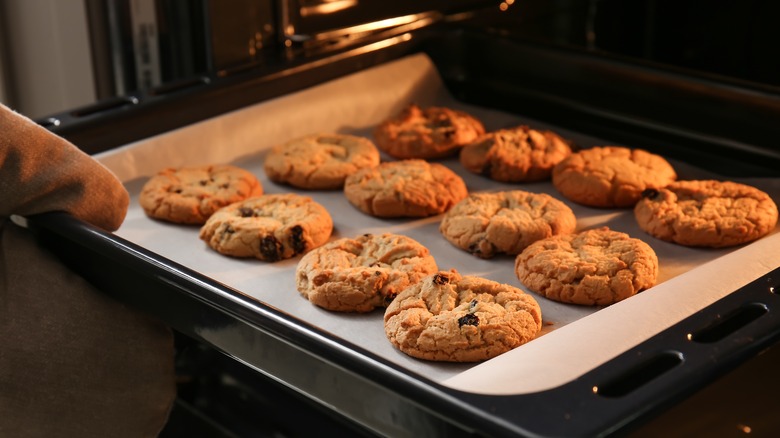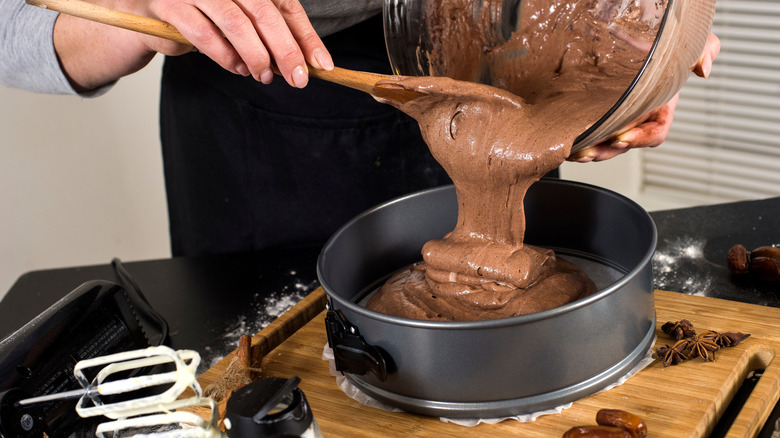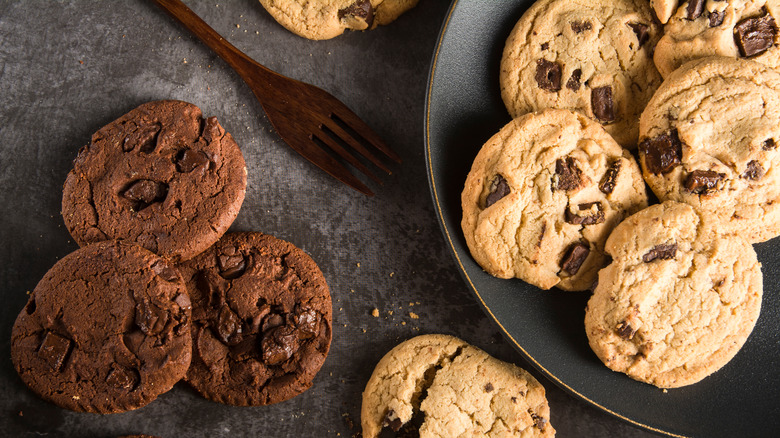Why Following The Recipe Time When Baking Cookies Might Be A Bad Idea
Baking is a science that requires precision to achieve just-right results. Each recipe has a set balance of ingredients, all of which serve their own unique purpose; any variation in that balance can cause catastrophic results. According to CookingLight, substitutions can completely change the chemistry of your baking. When you find a new recipe to follow, more than likely, you will not be using the exact same equipment as the recipe's creator, so you will not achieve a perfect recreation every time; the baking time the creator used might not be the one that works for you.
But instead of completely writing off the suggested baking time, it can be used as more of a general guide. You can start checking on your baked goods as it gets close to that time but use your own judgment to decide when they are really done. There are a number of reasons that your bake times may need to be altered, and learning how to tell when baked goods are done is a more effective way to create perfect treats every time. But how can you tell when the bake time needs to be adjusted, and how will you know when your baked goods are done without relying on a clock?
Oven temperature variations can change results
Every oven is built differently, and that can mean slight temperature variations are present in each model. According to Whirlpool, convection ovens use a fan and exhaust system to circulate hot air evenly, which can help food cook more uniformly. Conventional ovens, meanwhile, use dual heating elements on the top and bottom of the inside of the oven to cook food. This means that if you place your tray of cookies closer to the bottom of the oven, the bottoms will cook first. If the recipe author uses one kind of oven and you own the other, you may need to adjust your baking time.
The weather can also affect your baking — according to Farmer's Almanac, dry ingredients can absorb moisture from the air on humid days. They also say that recipes may require some extra baking time due to the added moisture, so it may be a good idea to add an extra three to five minutes to your estimated bake time depending on the day. Paying attention to humidity levels is especially important when you are baking something that requires a specific consistency, like pie dough, so that you can avoid a crumbly crust on dry days.
How do you know when you are done baking without a timer?
The best way to tell if your treats are done baking is, generally, just by looking at them. Sally McKenney, author of Sally's Baking Recipes, revealed she never looks at recipe times when making cookies. Instead, she looks for key signs that her cookies are done: set, slightly browned edges. If you like softer cookies, you can check for a slightly underbaked center or leave them in a little longer for more well-done cookies. Seeing baking time as a guideline rather than a rule can take your favorite cookie recipe up a notch.
For cake baking, Betty Crocker recommends inserting a knife or toothpick into the center of the cake. If it comes out clean, your cake is ready to come out and cool. If your knife comes out with uncooked batter or feels sticky to the touch, the cake may need a few more minutes to bake. The edges should also pull away from the pan just a bit, and the top should "spring back" when you press lightly on it. You can also check the internal temperature of the cake, which should be around 98°C or 210°F. All of these indicators will do a better job of helping you bake the perfect cookie than blindly following the recipe time.


